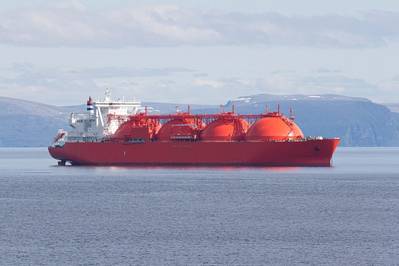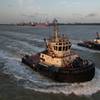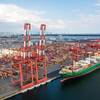Germany Builds up LNG Import Terminals
German utility RWE on Jan. 1 handed over floating liquefied natural gas (LNG) infrastructure at Brunsbuettel on the North Sea to state-owned Deutsche Energy Terminal (DET) as agreed when first imports arrived 10 months ago, it said.
DET is now the sole operational manager and markets the capacity of the Brunsbuettel Elbehafen LNG project.
Germany's quest to increase LNG capacity for regasification on its shores has intensified as it seeks to end reliance on Russian pipeline gas, on which Europe depended heavily prior to Moscow's invasion of Ukraine last year.
Pending the provision of fixed terminals, Germany is using floating storage and regasification terminals (FSRUs) to help to replace piped Russian gas supplies.
Three FSRUs are working at the Wilhelmshaven, Brunsbuettel and Lubmin ports after Germany arranged their charter and onshore connections.
Wilhelmshaven, Stade and Mukran, a port on the Baltic Sea island of Ruegen due to be connected with Lubmin on the mainland, are due to add more FSRUs in the winter of 2023/24.
Industry and the government are also building up terminal capacity in anticipation of increased use of hydrogen at the sites, which when produced using renewable energy can help the transition to a lower carbon economy.
State-owned DET held auctions for regas capacities in 2024 at Brunsbuettel and Wilhelmshaven 1 in November and Stade and Wilhelmshaven 2 rounds in December.
Mukran
Private company Deutsche ReGas reported in August that suppliers had booked 4 billion cubic metres (bcm) per annum of capacity for 10 years at Mukran, where the company wants to pull together two FSRUs for deliveries to the mainland.
It has chartered a second FSRU, the Transgas Power, with regasification capacity of 7.5 bcm, to complement the Neptune currently active at Lubmin.
LNG from Mukran is targeted to flow to onshore grids via gas grid company Gascade's new pipeline from the first quarter of 2024, which obtained approval for completion from mining authorities in November.
The project has triggered local opposition. Two legal challenges by environmental groups DUH and Nabu were thrown out by the federal administrative court in September.
Wilhelmshaven
Utility Uniper UN01.DE launched Germany's first FSRU operations, Wilhelmshaven 1, in December 2022 at the deep-water port on the North Sea.
LNG/TKUK
Tree Energy Solutions (TES) plans to operate a second FSRU, Wilhelmshaven 2, in the years between 2024 up to 2027.
Further ahead, Uniper plans to add a land-based ammonia reception terminal and cracker in the second half of this decade. Ammonia is at times used as a carrier for hydrogen, whose low density otherwise makes transportation over long distances complicated.
TES also has plans to eventually convert its operations to clean gases.
Lubmin
The FSRU Neptune, chartered by Deutsche ReGas, began receiving LNG at Lubmin on the Baltic Sea early in 2023.
The gas is first delivered to another storage vessel, the Seapeak Hispania, and shuttled to Lubmin in a set-up taking account of shallow water.
ReGas holds long-term supply deals with France's TotalEnergies and trading group MET.
The government wants the Neptune to move to Mukran on Ruegen island, allowing the Seapeak Hispania to depart, and join the second FSRU there, the Transgas Power.
Regas plans hydrogen electrolysis plants at both Lubmin and Mukran.
Brunsbuettel
The Brunsbuettel FSRU went into operation in April, initially chartered and operated by RWE's trading arm before the handover to DET at the start of 2024.
It is the forerunner of a land-based LNG facility, which has been cleared to receive 40 million euros ($44 million) of state support, that could start operations at the end of 2026, when an adjacent ammonia terminal could also start up.
State bank KfW, Gasunie and RWE are stakeholders and Shell has committed to sizeable purchases.
The total costs of the land-based terminal are 1.3 billion euros.
Stade
The inland port on the river Elbe a year ago started work on a landing pier for an FSRU, to be ready in winter 2023/24.
Designated vessel Transgas Force, moored at Bremerhaven port to be fixed up for the purpose, is expected to arrive in February.
Project firm Hanseatic Energy Hub (HEH) also plans a land-based terminal where it has allocated regasification capacity to become operational in 2027.
The allocations include volumes for state-controlled SEFE, utility EnBW and Czech utility CEZ.
It has begun sounding out the market to determine whether the longer-term plans should be based largely on ammonia to be reconverted into clean hydrogen. It has identified a construction consortium.
HEH is backed by investment firm Partners Group, logistics group Buss, chemicals company Dow and Spanish grid operator Enagas.
($1 = 0.9127 euros)
(Reuters - Reporting by Vera Eckert; Editing by David Evans, Chizu Nomiyama and Mark Potter)















